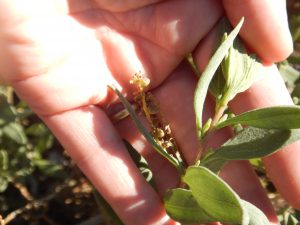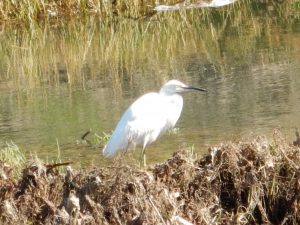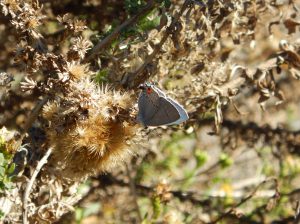Under the direction of teacher Stephanie Buttell-Maxin, students in two 3rd grade Spanish immersion classes took to “the field” to study biodiversity firsthand as part of a schoolyard BioBlitz. “The field,” in this case, is an area immediately adjacent to the school campus that includes a tidal creek. While the area is far from pristine, it provides valuable habitat within an area that is heavily impacted by high density and industrial land uses. Paradise Creek has provided a focal point for environmental education and community activism at Kimball, with students participating in water quality monitoring and site clean ups over the years. BioBlitzing has also been a regular activity.
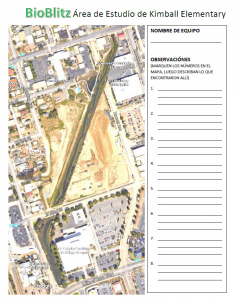
Before even starting the BioBlitz, Mrs. Maxin oriented the students in a thoughtful way by posing two compelling questions about biodiversity and plant and animal adaptations. For the activity, we prepared materials to aide the students in making field observations. Each was given a worksheet and a site map for taking notes, plus magnifiers and cameras that were shared among the students. Mrs. Maxin keeps a wonderful collection of photos and plant samples so the students could use those as resources when trying to determine what they were observing. Prior to heading out into the field, students were provided with some instruction on what naturalists do and coached in using all of their senses to examine the natural world closely. Each small group of 3-5 students was led by an adult, but students decided what to document and collected all of the data on their own.
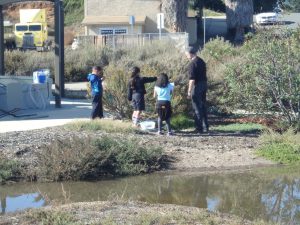
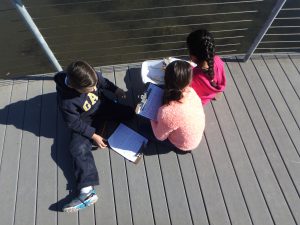
The students really enjoyed taking a closer look at a place they already knew well, and they were able to uncover new information. They realized how many different kinds of plants occupied this small space, and they also experienced how challenging it can be to get a good photo of a moving target. Their knowledge of the site also proved useful in guiding their investigations. Students referred to their site maps and used map reading skills to mark the locations of their observations on that map. While being naturalists, students also commented on how the trash left behind by people (and washed in by the tides) presented a challenge to the health of the plants and animals, and therefore to the well-being of the students themselves. Civic involvement often means taking care of the place where you live, and they were motivated to make improvements to this place.
Classroom activities reinforced the field activities. Students reflected on their experiences in the field and responded to the questions about biodiversity and adaptations. They made presentations about what they had learned. A table top-sized reproduction of that site map was used in the classroom to transfer all of the observations onto a single map, reinforcing map reading skills and providing extra help for those students who struggled to relate the site map to the real space that they had just explored. Finally, their best observations – those that included good photos and definitive locational information – were entered into iNaturalist, where a project had been set up specifically for the Kimball BioBlitz. With assistance from other users on iNaturalist, the group’s 28 observations yielded 17 confirmed species identifications within 24 hours of completing the project. Another exciting development is that 13 of the observations have been certified as “Research Grade,” which means the students are contributing to scientific knowledge through “crowdsourcing” or “citizen science.”
Congratulations to Mrs. Maxin and the 3rd graders at Kimball Elementary for a job well done. And thank you to the volunteers who helped make this a great experience for the students: Patricia Simpson, Christopher Maxin, Emanuel Delgado, and T Herman.


